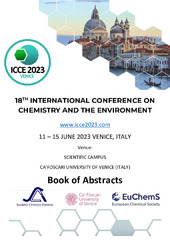Приказ основних података о документу
Waste to Energy: Agro-industrial Waste Valorisation Toward Enriched Pellet Production
| dc.creator | Simić, Zoran V. | |
| dc.creator | Ivaniš, Gorica R. | |
| dc.creator | Miškov Panić, Sofija P. | |
| dc.creator | Kijevčanin, Mirjana Lj. | |
| dc.creator | Radović, Ivona R. | |
| dc.date.accessioned | 2024-04-02T09:09:49Z | |
| dc.date.available | 2024-04-02T09:09:49Z | |
| dc.date.issued | 2023 | |
| dc.identifier.uri | http://TechnoRep.tmf.bg.ac.rs/handle/123456789/7395 | |
| dc.description.abstract | The negative impact of the use of fossil fuels on the environment has led to an increase in research in the field of renewable energy sources and intensified the production of biodiesel. The latter has caused the accumulation of a large amount of waste glycerol, since about 1 kg of crude glycerol is obtained for 10 kg of biodiesel. Crude glycerol is traditionally considered a low-value waste because of impurities and variable composition and its disposal was limited due to the harmful effects on the environment. To reuse this by-product of the transesterification reaction, in most cases it needs to be refined. However, crude glycerol purification requires additional costs while at the same time the glycerol market is already saturated and, consequently, the price of crude glycerol continues to decline. To avoid the accumulation of waste glycerol and pollution of the environment, it is necessary to find some applications for the raw glycerol obtained from the industrial production of biodiesel (Groesbeck et al., 2008). Crude glycerol can be integrated with waste biomass, such as agricultural waste and wood residues, to improve its properties as a fuel. During the production of pellets, raw glycerol serves as a binder, which increases the yield and durability of pellets during storage and transportation. Additionally, it serves as a lubricant reducing the energy required for palletisation. It has been shown that when burning pellets with additional raw glycerol, a significantly lower amount of NOx is released than in the case of classic wood pellets (Zhang et al., 2022). In this study, we investigated the possibility of adding waste crude glycerol to waste agro-industrial biomass in the production of enriched pellets. By applying the basic principles of the circular economy, the glycerol used for the purposes of this research was obtained from the transesterification reaction between used edible oil and short-chain alcohol, with the presence of a catalyst obtained from the waste shell of chicken egg. The characterization of the mixtures of different agricultural biomass and agro-industrial waste with different mass fraction of crude glycerol was performed. Standard analyses for determining the quality of pellets (such as calorific value, ash content, etc.) were performed to examine the possibility of using the enriched pellets obtained in this way in existing boilers designed for the use of commercial pellets. | sr |
| dc.language.iso | en | sr |
| dc.publisher | Ca'Foscari University of Venice | sr |
| dc.relation | United Nations Development Programme and Global Environment Fund (CIRCULAR VOUCHERS – Ref: 00123168/01-01) | sr |
| dc.relation | info:eu-repo/grantAgreement/MESTD/inst-2020/200135/RS// | sr |
| dc.relation | info:eu-repo/grantAgreement/MESTD/inst-2020/200287/RS// | sr |
| dc.rights | openAccess | sr |
| dc.rights.uri | https://creativecommons.org/licenses/by-nc-nd/4.0/ | |
| dc.source | Book of abstracts / 18th International Conference on Chemistry and the Environment – ICCE 2023, June 11-15, 2023, Venice, Italy | sr |
| dc.title | Waste to Energy: Agro-industrial Waste Valorisation Toward Enriched Pellet Production | sr |
| dc.type | conferenceObject | sr |
| dc.rights.license | BY-NC-ND | sr |
| dc.citation.spage | 327 | |
| dc.identifier.fulltext | http://TechnoRep.tmf.bg.ac.rs/bitstream/id/20491/Agro_industrial_waste_pub_2023.pdf | |
| dc.identifier.rcub | https://hdl.handle.net/21.15107/rcub_technorep_7395 | |
| dc.type.version | publishedVersion | sr |

